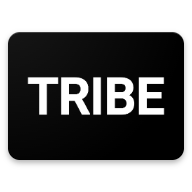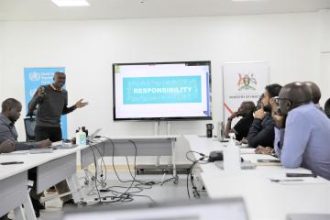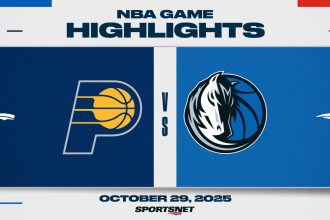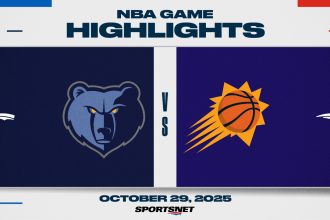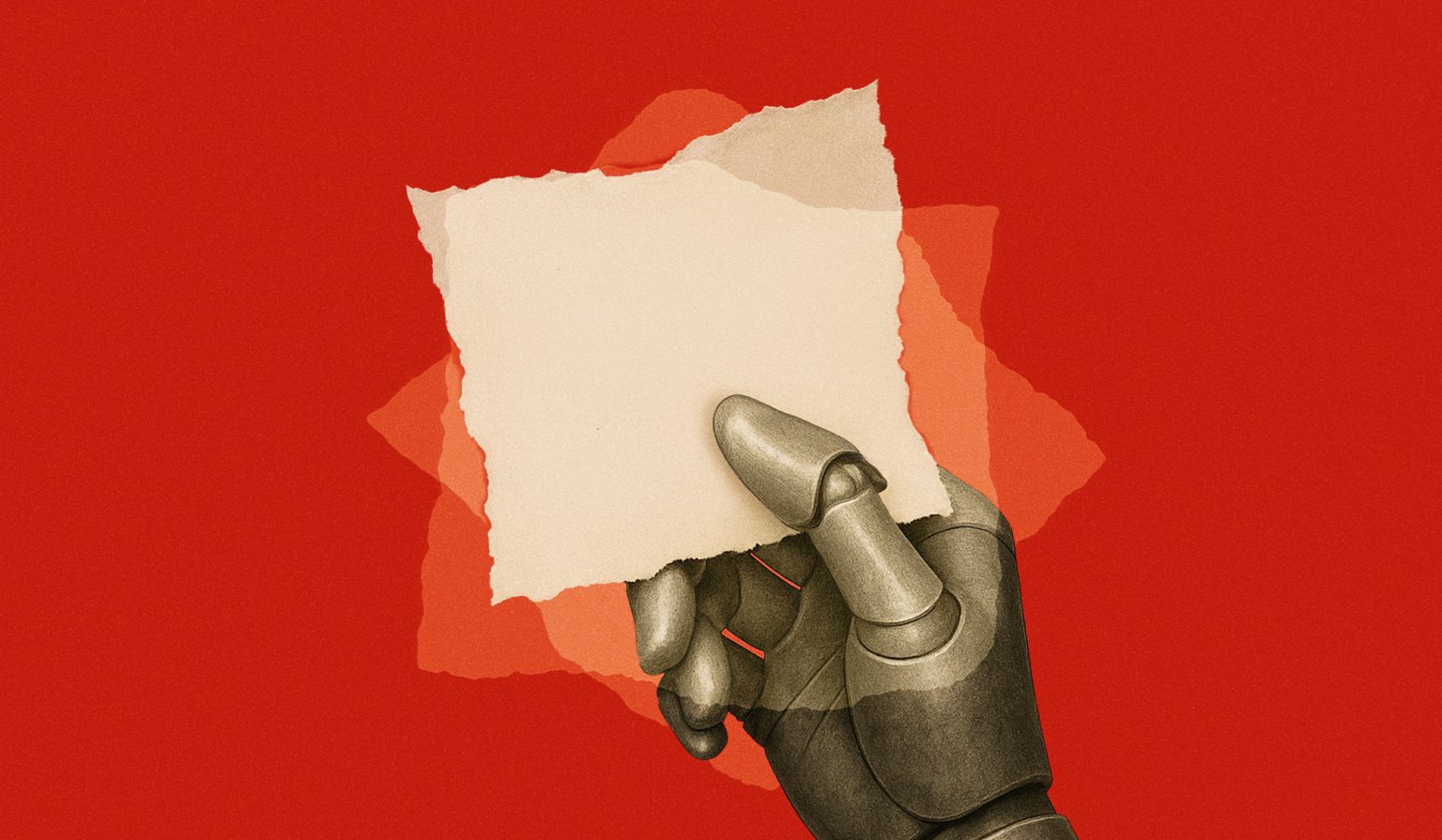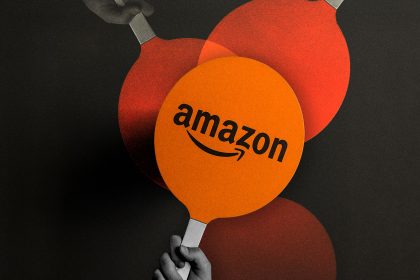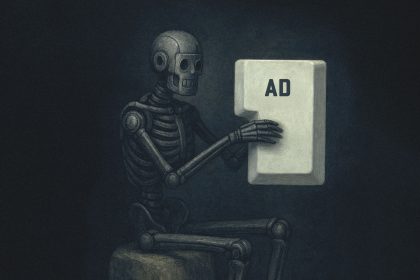This Media Briefing covers the latest in media trends for Digiday+ members and is distributed over email every Thursday at 10 a.m. ET. More from the series →
This week’s Media Briefing looks at how publishers are laying the rails for agent-led buying. We look beyond the hype at the reality of what agents are in play today within publishers’ commercial operations and what’s moving into the pilot phase.
Agents aren’t a demo anymore; publishers have them running real jobs.
Today it’s RFP interpretation, planning, pacing, and curation. Next up: direct pipes, fewer hops, and a smaller take-rate.
The promise is enticing: agentic AI-driven media trading could (theoretically) wipe out many of the problems caused by its programmatic predecessor. Namely, ad tech middlemen. Instead of having ads pass through countless vendors who each take a cut, agents would effectively cut the line, so more of the money reaches the publisher, and the results are easier to see. If you strip it back entirely, it’s like middlemen built the pipes; agents let publishers keep the water.
The end goal for a publisher would be: a seller and a buyer agent coordinating directly, with ideally, no coordination agent in the middle, as one exec at a major global publisher, who agreed to speak candidly in exchange for anonymity, put it. Their preference is to see if holding groups or media agencies are willing to work with them directly on agent pilots, where their own seller agent talks directly to the buy-side agent. What they don’t want: the recreation of a multi-step programmatic ad tech stack, whereby the various cuts taken by vendors along the way can run as high as 50 percent.
On that point, publishers agree. As Rob Bradley, svp of digital revenue, strategy and operations at CNN International Commercial, said: “Programmatic is really due for an upgrade.” Agentic-driven media buying could be it.
“We should all be striving to use whatever the latest technology there is to make our world more efficient. And the idea that an agentic system would monitor performance of campaigns, CTR, viewability, conversions automatically, and adjust pricing — where things are delivered to meet campaign metrics based off a command, is really appealing,” said Bradley.
While major publishers prefer to consider building agents in-house, smaller ones are for now using those supplied by their tech partners, for focused tasks like RFP interpretation and response, audience and campaign planning, and optimization. It’s worth underscoring that there is no transactional volume yet against AI buying agents, but more publishers are quietly putting the stepping stones in place to prepare for what many see not just as a possibility but an inevitability.
On the face of it — compelling. But of course, the devil is in the details — and they’re messy.
What’s real vs hype?
Before we get too carried away, it’s still early days. As two publishing execs, who agreed to speak anonymously, said, the ad tech companies will be roughly six months ahead of reality. When it comes to testing how buyer and seller agents manage inventory trading, that will likely be in the proof-of-concept phase for around that time, too.
And yet, things move fast in the generative AI era. Currently, around 50 percent of Permutive’s 150+ publisher clients are using agents in their day-to-day operations like RFP interpretations and assessing RFP win rates, according to CEO Joe Root. Today, the company will take the wrapper off a suite of agents at its Data Collaboration Summit in New York, designed to make direct buying possible at scale, by what it claims will mitigate fragmentation on the open internet. Its agents are already live and running across the direct buying cycle from audience management, planning, optimization and reporting.
Buying agents can adapt to each publisher’s formats and inventory, using supply-side signals to make ads truly native, Root told Digiday. That levels the playing field with Meta and Google — and fixes the resourcing gap where agencies staff big-platform teams but can’t manage dozens of individual publishers, he noted.
Agents already touch hundreds of millions in spend across the ad cycle; within months, he expects those dollars to transact directly through them. “Publishers are at the place where there aren’t all that many steps required for them to be able to expose those to buying agents,” he said. Some of its publisher partners are now building agents to orchestrate their Permutive agents, he added.
Talk of agents outworking humans makes people squirm, but programmatic trading is still painfully manual — hence the push for agent-led buying — and Bradley’s view is that the fix is modernization and redeployment, not cuts, moving roles into more strategic, revenue-driving work.
Last week’s buzz was Ad Context Protocol — an open-source standard that gives AI agents a common language to transact across advertisers, publishers, and ad tech. Most publishers Digiday spoke with are still sizing up the implications and watching whether the buy side adopts it.
“It remains to be seen whether platforms that deploy agents that are based on AdCP’s standards will replace incumbent DSPs, or whether agents built on these standards become integrated into existing platforms as a feature,” said a programmatic exec at a major European publisher.
Here come the caveats
As the recent AWS outage showed, systems fail. The same will be true of agentic media buying and selling. It will not work well right out of the gate. As one publishing exec put it, the first seller agents are like interns: eager, useful, but needing supervision. No one hands sales to an intern for a reason: they underprice, grab the quick win, and skip guardrails. Early buying agents will behave the same way: rookie buyers hunting cheap reach, they stressed.
“Everything that any junior revenue sales person in the entire media ecosystem has ever done wrong is going to happen at scale with agents. You need to walk into this with your eyes open, knowing it’s going to fail,” they said.
Another reason to cut intermediaries: fewer hops mean faster fixes when things break. Even once early bugs are sorted, bigger questions remain, like can today’s ad servers (namely Google Ad Manager) handle agentic transactions without slowing pages? For now, there’s no clear answer.
And why one-to-one partnerships from the buy and sell side will matter. “If we have multiple hops, it’s all going to go horribly wrong, because trying to coordinate across multiple companies is hard, as well as multiple companies using black box agents — it’s going to be a mess,” said the same exec.
Another big caveat. Regardless of AdCP agent adoption will only happen at scale if the outcomes drive solid outcomes for buyers and drive up yields for publishers, stressed Root.
“I believe in this future of direct buying agents, but transactional volume is not there today, and it won’t move there unless our [publisher ad] products outperform Facebook and Google. That’s where publishers need to focus – on building high-quality ad products that deliver outcomes. Then, direct buying agents will start to shift dollars there. Until we’ve got that nailed, it doesn’t really matter if we’ve got a Protocol.”
BBC adds documentaries to U.S. subscription
BBC added ad-free documentaries to its U.S. subscription plan last week, as an expansion to its paid program, which the company launched in June.
Subscribers can now access over 1,600 hours of documentaries. New titles will be added weekly. A BBC subscription costs $49.99 a year or $8.99 a month. Non-paying readers can watch trailers of the documentaries with ads. All the documentaries are available in a new section on the BBC US website.
Over the past 12 months, BBC.com has averaged 60 million monthly U.S. visitors, with September bringing in 77 million U.S. visitors, according to the publisher.
Since relaunching BBC.com last year, the goal was to build a “front door” for BBC’s range of content, Tara Maitra, president of global news & streaming at BBC Studios, told Digiday.
“This is a big step in our subscription journey,” Maitra said. “It’s part of a broader push to give people more ways to engage with BBC content outside the U.K. — while also helping us grow revenue that supports our journalism… Documentaries especially are seeing a surge in interest, so this is really a thoughtful move based on strengths and audience habits.”
Maitra stressed that the subscription push isn’t driven by the volatility in the ad market currently. “Advertising remains a big part of our business, especially globally, but subscriptions give us another way to grow and balance how we bring in revenue,” she said.
The shifting search-and-discovery landscape — reshaped by AI tools and assistant-led browsing — has been on the BBC’s radar as it maps a U.S. subscription push. So far, it hasn’t seen any referral traffic drops, Maitra said. In fact, September was its biggest month ever for U.S. traffic. “Regardless of how discovery evolves, our strategic priority remains unchanged – building direct, loyal, and engaged relationships with audiences on our owned and operated platforms. That’s why we’ve introduced a subscription model,” she said. – Sara Guaglione
Numbers to know
$48 million: The net loss posted by the Los Angeles Times for 2024, despite generating $237 million in revenue.
$15 billion: The sum Trump seeks in a refiled defamation suit against The New York Times.
£52.8 million ($71 million): Generated in display ad revenue by U.K. publishers in the second quarter of 2025 — down 7 percent, according to data from the Association of Online Publishers and Deloitte.
72%: Volume of Gemini answers that showed serious sourcing errors, in an AI Assistants’ Accuracy Study.
What we’ve covered
OpenAI’s ChatGPT Atlas browser aims to turn the internet into a conversation
OpenAI just threw another curveball: a browser called ChatGPT Atlas
For publishers, ChatGPT Atlas could feel like deja vu with higher stakes. If ChatGPT becomes the front door to the internet, it risks cutting content creators further out of the loop.
Read more about what it really means in practice here.
AI royalties for small and midsize publishers: collective licensing’s next big play
Don’t credit OpenAI’s ChatGPT, credit corporate LLMs — enterprise RAG is what’s creating royalty revenue for publishers.
Dow Jones’ Factiva has a usage API to ensure that any usage is attributable and that it can ensure its publishers are paid accurately (on a per usage basis per RAG query).
Read more about how they’re doing this here.
The Economist licenses its content to enterprise clients’ private LLMs
The Economist has opened its API to corporate clients with their own data ring-fenced LLMs this August. Its president, Luke Bradley Jones sees this as a potential path to recurring, usage-based revenue that monetizes evergreen content in the zero-click era.
The Financial Times has also opened its archive to enterprise clients’ private LLMs.
Read more about this here.
In Graphic Detail: How AI search is changing publisher visibility
Some publishers are seeing decent visibility in AI platforms, particularly ChatGPT and Google’s AI Mode.
AI is more likely to pull information from user-generated content from sources like Reddit and YouTube, than from traditional publishers, the study claims.
Read more about the trends here.
What we’re reading
New York Times debuts TikTok-style Watch tab in its app
The New York Times said it’s adding a new hub inside its main app featuring a curated feed of short, vertical, scrollable news videos refreshed daily. The move is part of a broader push to house all of its journalism in one place rather than in separate apps.
The Atlantic is thriving under hybrid model
Amid industry turmoil, the 168-year-old Atlantic is thriving with its newspaper-magazine hybrid model.
Italian publishers demand investigation into Google AI Overviews
Italian publishers have asked regulators to investigate Google’s AI Overviews, warning the feature’s summaries drain traffic and threaten their businesses. The industry body FIEG confirmed it has filed a formal complaint with Agcom, Italy’s communications authority.”
Layoffs at The Wall Street Journal
The Wall Street Journal has cut about a dozen reporters and editors from its health, science and education teams, editor-in-chief Emma Tucker told staff in a memo.
AI-generated news sites are spouting higher volume of viral slop
A new wave of content farms is using AI to churn out clickbait.
